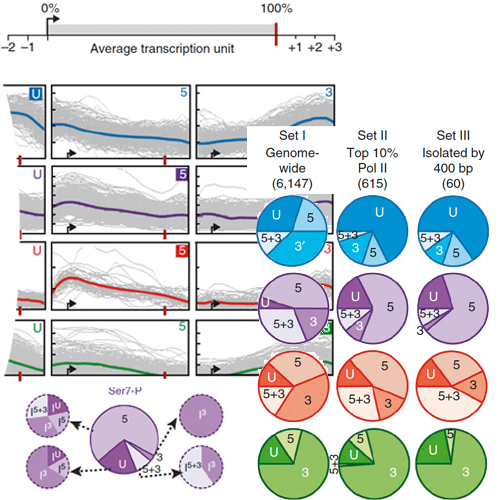Chemical-genomic dissection of the CTD code
29-Aug-2010
Nature Structural & Molecular Biology, 2010, doi:10.1038/nsmb.1900 published on 29.08.2010
Nature Structural & Molecular Biology, online article
Nature Structural & Molecular Biology, online article
Sequential modifications of the RNA polymerase II (Pol II) C-terminal domain (CTD) coordinate the stage-specific association and release of cellular machines during transcription. Here we examine the genome-wide distributions of the 'early' (phospho-Ser5 (Ser5-P)), 'mid' (Ser7-P) and 'late' (Ser2-P) CTD marks. We identify gene class–specific patterns and find widespread co-occurrence of the CTD marks. Contrary to its role in 3′-processing of noncoding RNA, the Ser7-P marks are placed early and retained until transcription termination at all Pol II–dependent genes. Chemical-genomic analysis reveals that the promoter-distal Ser7-P marks are not remnants of early phosphorylation but are placed anew by the CTD kinase Bur1. Consistent with the ability of Bur1 to facilitate transcription elongation and suppress cryptic transcription, high levels of Ser7-P are observed at highly transcribed genes. We propose that Ser7-P could facilitate elongation and suppress cryptic transcription.











